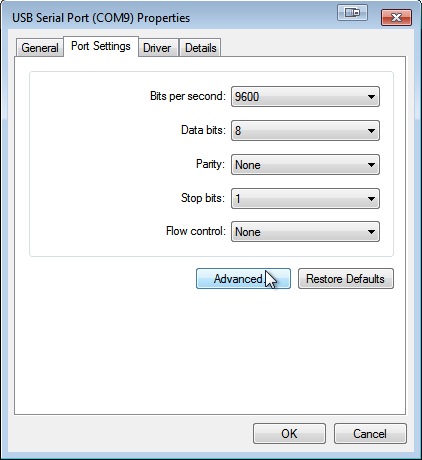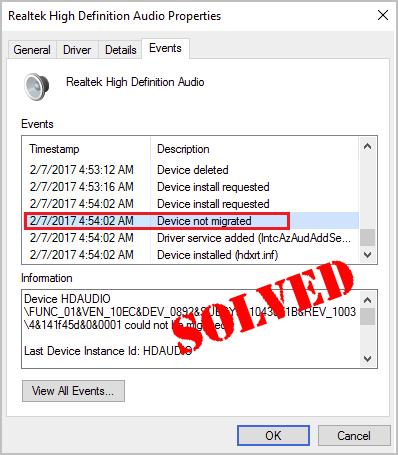This USB driver (STSW-LINK009) is for ST-LINK/V2, ST-LINK/V2-1 and STLINK-V3 boards and derivatives (STM8/STM32 discovery boards, STM8/STM32 evaluation boards and STM32 Nucleo boards). It declares to the system the USB interfaces possibly provided by the ST-LINK: ST Debug, Virtual COM port and ST Bridge interfaces. The Allen Bradley OPC Server from Matrikon ® enables OPC access to any Allen Bradley PLCs like PLC5, SLC500, MicroLogix, CompactLogix, and ControlLogix. Built for those who are integrating their Allen Bradley PLCs with historians, HMIs, and other OPC-enabled applications or devices without the need for any third party applications.
- MAN Port Devices Driver Download
- Man Port Devices Driver Download Win 7
- Man Port Devices Driver Download Windows 10
- Man Port Devices Driver Download Windows 7
- Man Port Devices Driver Downloads
Name
virt-install - provision new virtual machines
Synopsis
virt-install [ OPTION ]..
Description
virt-install is a command line tool for creating new KVM , Xen, or Linux container guests using the 'libvirt' hypervisormanagement library. See the EXAMPLES section at the end of this document to quickly get started.
virt-install tool supports both text based & graphical installations, using VNC or SDL graphics, or a text serialconsole. The guest can be configured to use one or more virtual disks, network interfaces, audio devices, physical USB or PCIdevices, among others.
The installation media can be held locally or remotely on NFS , HTTP , FTP servers. In the latter case'virt-install' will fetch the minimal files necessary to kick off the installation process, allowing the guest to fetch the rest of theOS distribution as needed. PXE booting, and importing an existing disk image (thus skipping the install phase) are alsosupported.
Given suitable command line arguments, 'virt-install' is capable of running completely unattended, with the guest 'kickstarting' itself too. Thisallows for easy automation of guest installs. An interactive mode is also available with the --prompt option, but this will only ask for the minimum requiredoptions.
Options
Most options are not required. Minimum requirements are --name, --ram, guest storage (--disk, --filesystem or --nodisks), and an install option.
If running on a host with the Xen kernel (checks against /proc/xen)
It is only necessary to provide the '--connect' argument if this default prioritization is incorrect, eg if wanting to use QEMUwhile on a Xen kernel.
General Options
CPU topology can additionally be specified with sockets, cores, and threads. If values are omitted, the rest will be autofilled preferingsockets over cores over threads.
The nodeset string must use escaped-quotes if specifying any other option.
Specific CPU features can be specified in a number of ways: using one of libvirt's feature policy values force, require, optional, disable,or forbid, or with the shorthand '+feature' and '-feature', which equal 'force=feature' and 'disable=feature' respectively
Some examples:

Installation Method options
With libvirt 0.9.4 or later, network URL installs work for remote connections. virt-install will download kernel/initrd to the local machine,and then upload the media to the remote host. This option requires the URL to be accessible by both the local and remote host.
The 'LOCATION' can take one of the following forms:
--initrd-inject=/path/to/my.ks --extra-args 'ks=file:/my.ks'
By default, virt-install will attempt to auto detect this value from the install media (currently only supported for URL installs).Autodetection can be disabled with the special value 'none'
See '--os-variant' for valid options.
By default, virt-install will attempt to auto detect this value from the install media (currently only supported for URL installs).Autodetection can be disabled with the special value 'none'.
If the special value 'list' is passed, virt-install will print the full list of variant values and exit. The printed format is not a stable interface,DO NOT PARSE IT .
If the special value 'none' is passed, no os variant is recorded and OS autodetection is disabled.
Values for some recent OS options are:


--boot can be specified in addition to other install options (such as --location, --cdrom, etc.) or can be specified on it's own. In the latter case,behavior is similar to the --import install option: there is no 'install' phase, the guest is just created and launched as specified.
Some examples:
Storage Configuration
Specifying a non-existent path implies attempting to create the new storage, and will require specifyng a 'size' value. If the base directory of the path isa libvirt storage pool on the host, the new storage will be created as a libvirt storage volume. For remote hosts, the base directory is required to be astorage pool if using this method.

Installation Method options
With libvirt 0.9.4 or later, network URL installs work for remote connections. virt-install will download kernel/initrd to the local machine,and then upload the media to the remote host. This option requires the URL to be accessible by both the local and remote host.
The 'LOCATION' can take one of the following forms:
--initrd-inject=/path/to/my.ks --extra-args 'ks=file:/my.ks'
By default, virt-install will attempt to auto detect this value from the install media (currently only supported for URL installs).Autodetection can be disabled with the special value 'none'
See '--os-variant' for valid options.
By default, virt-install will attempt to auto detect this value from the install media (currently only supported for URL installs).Autodetection can be disabled with the special value 'none'.
If the special value 'list' is passed, virt-install will print the full list of variant values and exit. The printed format is not a stable interface,DO NOT PARSE IT .
If the special value 'none' is passed, no os variant is recorded and OS autodetection is disabled.
Values for some recent OS options are:
--boot can be specified in addition to other install options (such as --location, --cdrom, etc.) or can be specified on it's own. In the latter case,behavior is similar to the --import install option: there is no 'install' phase, the guest is just created and launched as specified.
Some examples:
Storage Configuration
Specifying a non-existent path implies attempting to create the new storage, and will require specifyng a 'size' value. If the base directory of the path isa libvirt storage pool on the host, the new storage will be created as a libvirt storage volume. For remote hosts, the base directory is required to be astorage pool if using this method.
An existing libvirt storage volume to use. This is specified as 'poolname/volname'.
Disk bus type. Value can be 'ide', 'scsi', 'usb', 'virtio' or 'xen'. The default is hypervisor dependent since not all hypervisors support all bustypes.
The initial time taken to fully-allocate the guest virtual disk (sparse=false) will be usually by balanced by faster install times inside the guest. Thususe of this option is recommended to ensure consistently high performance and to avoid I/O errors in the guest should the host filesystem fill up.
With libvirt 0.8.3 and later, this option should be specified if reusing and existing disk image, since libvirt does not autodetect storage format as it isa potential security issue. For example, if reusing an existing qcow2 image, you will want to specify format=qcow2, otherwise the hypervisor may not be able toread your disk image.
Disk IO backend. Can be either 'threads' or 'native'.
The following explicit options can be specified:
Networking Configuration
Other available options are:
Fixed MAC address for the guest; If this parameter is omitted, or the value 'RANDOM' is specified a suitable address will berandomly generated. For Xen virtual machines it is required that the first 3 pairs in the MAC address be the sequence '00:16:3e', while forQEMU or KVM virtual machines it must be '52:54:00'.
Graphics Configuration
General format of a graphical string isFor example:The supported options are:
vnc
Setup a virtual console in the guest and export it as a VNC server in the host. Unless the 'port' parameter is also provided, theVNC server will run on the first free port number at 5900 or above. The actual VNC display allocated can be obtained using the'vncdisplay' command to 'virsh' (or virt-viewer(1) can be used which handles this detail for the use).
sdl
Setup a virtual console in the guest and display an SDL window in the host to render the output. If the SDL window is closedthe guest may be unconditionally terminated.
spice
Export the guest's console using the Spice protocol. Spice allows advanced features like audio and USB device streaming, as well as improvedgraphical performance.
Using spice graphic type will work as if those arguments were given:none
No graphical console will be allocated for the guest. Fully virtualized guests (Xen FV or QEmu/KVM) will need to have a text consoleconfigured on the first serial port in the guest (this can be done via the --extra-args option). Xen PV will set this up automatically. Thecommand 'virsh console NAME ' can be used to connect to the serial device.
Linksys multifunction devices driver download for windows 10. The format for this value is YYYY-MM-DDTHH:MM:SS , for example 2011-04-01T14:30:15
Virtualization Type options
Device Options
This deprecates the old boolean --sound model (which still works the same as a single '--soundhw default')
Use the recommended settings:
--watchdog default
Use the i6300esb with the 'poweroff' action
--watchdog i6300esb,action=poweroff
MAN Port Devices Driver Download
Connect to localhost, port 1234:
--serial tcp,host=:1234
Wait for connections on any address, port 4567:
--serial tcp,host=0.0.0.0:4567,mode=bind
Wait for telnet connection on localhost, port 2222. The user could then connect interactively to this console via 'telnet localhost 2222':
--serial tcp,host=:2222,mode=bind,protocol=telnet
Send output to default syslog port (may need to edit /etc/rsyslog.conf accordingly):
--serial udp,host=:514
Send output to remote host 192.168.10.20, port 4444 (this output can be read on the remote host using 'nc -u -l 4444'):
--serial udp,host=192.168.10.20:4444
Some of the types of character device redirection are:
Example:
Mode is one of host, host-certificates, or passthrough. Additional options are:
Man Port Devices Driver Download Win 7
Man Port Devices Driver Download Windows 10
Miscellaneous Options
If the guest has an install phase, you will need to use --print-step to specify exactly what XML output you want. This option implies--quiet.
Examples
Install a Fedora 13 KVM guest with virtio accelerated disk/network, creating a new 8GB storage file, installing from media in the hostsCDROM drive, auto launching a graphical VNC viewerInstall a Fedora 9 plain QEMU guest, using LVM partition, virtual networking, booting from PXE , usingVNC server/viewerInstall a guest with a real partition, with the default QEMU hypervisor for a different architecture using SDL graphics, usinga remote kernel and initrd pair:Run a Live CD image under Xen fullyvirt, in diskless environmentRun /usr/bin/httpd in a linux container guest ( LXC ). Resource usage is capped at 512 MB of ram and 2 host cpus:Install a paravirtualized Xen guest, 500 MB of RAM , a 5 GB of disk, and Fedora Core 6 from a web server, intext-only mode, with old style --file options:Create a guest from an existing disk image 'mydisk.img' using defaults for the rest of the options.Test a custom kernel/initrd using an existing disk image, manually specifying a serial device hooked to a PTY on the host machine.
Authors
Written by Daniel P. Berrange, Hugh Brock, Jeremy Katz, Cole Robinson and a team of many other contributors. See the AUTHORS file in thesource distribution for the complete list of credits.
Bugs
Please see http://virt-manager.org/page/BugReporting
Copyright
Copyright © 2006-2011 Red Hat, Inc, and various contributors. This is free software. You may redistribute copies of it under the terms of theGNU General Public License 'http://www.gnu.org/licenses/gpl.html'. There is NO WARRANTY , to the extent permitted bylaw.
See Also
virsh(1), 'virt-clone(1)', 'virt-manager(1)', the project website 'http://virt-manager.org'
Referenced By
libvirtd(8),virt-convert(1),virt-image(1),virt-image(5)- Posted by:
- Posted on:
- Category:
Wireless MouseWireless Mouse - System:
Unknown - Price:
USD 0
Logitech Wireless-Mouse-M171, install, manual, review, SetPoint, Unifying, Driver and Software Download for Windows And Mac – welcome again to our blog, we are ready to serve you and your complaints in this field. here we provide the best drivers and trusted and accurate. Our Logitech drivers are very safe and protected by dangerous viruses. because for us customer satisfaction is the main thing. We provide Windows 10, Windows 8, Windows 7, Mac OS X 10.11.x drivers, Mac OS X 10.12.x, Mac OS X 10.13.x, Mac OS X 10.14.x
Whether utilizing a COMPUTER or laptop, a mouse is one of the much-needed hardware. Without a mouse present, you will have a problem navigating and giving commands to the computer system. One of the preferred computer mouse brands amongst computer or COMPUTER individuals is Logitech M170/ 171. Logitech M170/ 171 Reviews are popular as a result of the numerous advantages used by this product. The Logitech Wireless Mouse is among the more expensive mice since the price is extremely budget-friendly. Even so, the top quality of this computer mouse is very certified and can also be paired with various other great mice. Like that, Logitech is a company that has a lot of experience in creating and also marketing computer tools, consisting of a computer mouse.
So it's just all-natural that Logitech items are understood to be excellent and also of excellent quality. As a result of his popularity, that's why many individuals are waiting for details concerning the Logitech M170/ 171 Review. Are you additionally thinking about this computer mouse evaluation? The following is a full testimonial. Lots of people want the Logitech M170/ 171 Testimonial because of the cordless connection paired with this computer mouse. Wherewith the cordless link, you can breathe with a distance of approximately 10 meters. An additional point that makes the Logitech M170/ 171 Wireless Mouse so eye-catching to the general public is its comfort. Because you need to understand this computer mouse includes Ambidextrous design.
Permits you to use your right-hand man or left hand. The edge of the mouse is created with a patterned handle so it is not unsafe and also feels sturdy. Exactly how to use it is also simple. Because you can use the USB Nano Receiver plugs models that are available on the COMPUTER or laptop USB Port. You require to understand that the M170/ M171 computer mouse made by Logitech is a device with a plug and play connection. So you can simply link the receiver to the computer system's USB port. Then the computer mouse can be straight utilized. You do not require to download and install extra software application to use it. From Review Logitech M170/ 171 this computer mouse is acknowledged to be able to survive without a replacement battery for less than 1 year. To make the battery life longer, you can utilize the On/ Off Switch to make sure that the dead tool can't be utilized. Logitech M171 Driver and Software Download For Windows And Mac
Logitech M171 Specifications
| Brand | Logitech |
| Categories | Mouse Wireless |
| Mouse | M-R0060 |
| Software Support (at release) | Logitech Options |
| Connection Type | 2.4 GHz Wireless connection |
| DPI (Min/Max) | 1000 dpi |
| Sensor technology | Logitech Advanced Optical Tracking |
| Scroll Wheel | Yes |
Logitech M171 Driver and Software For Windows:
Software Version: 8.00.863
Last Update: 2019-09-04
OS: Windows 7, Windows 8, Windows 10
File Size: 188 MB
Man Port Devices Driver Download Windows 7
Logitech M171 Driver and Software For Mac:
Software Version: 8.02.86
Last Update: 2019-10-08
OS: macOS 10.15, macOS 10.14, macOS 10.13
File Size: 78 MB
Method 1 Connecting a Mouse with a Wireless Receiver
- Helpful? Plugin your mouse's receiver.
- Make sure that your mouse has batteries or is charged.
- Turn on your mouse.
- Press your mouse's 'Connect' button.
- Move your mouse around to test the connection.
Use these steps to change the mouse pointer speed:
- Click Start. In the Search box, type mouse.
- Click the Pointer Options tab.
- In the Motion field, click and hold the slide bar while moving the mouse to the right or left, to adjust the mouse speed.
- Click Apply, and then click OK to save your changes.
I suggest you follow the steps below and check if it helps.
- Navigate to Start>Settings>Devices.
- Click on Mouse and Touchpad.
- In the right pane, click on Additional Mouse Settings.
- Under Pointer tab, Click on Use Default.
- Click on Apply and OK.
Man Port Devices Driver Downloads
How do I change my mouse pointer?
- Click the lower-right Start button, type mouse in the search box and select Mouse in the results to open Mouse Properties.
- Tap Pointers, click down arrow, choose a scheme from the list and select OK.
- Change the size and color of the Mouse Pointer in the Control Panel.
- Tap Change how your mouse works.
